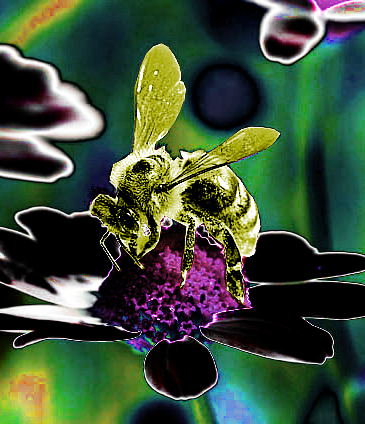Pesticides appear in most honey
 Three-quarters of honey worldwide contains traces of neonicotinoid pesticide, an international study finds.
Three-quarters of honey worldwide contains traces of neonicotinoid pesticide, an international study finds.
The findings - which included samples from Australia and New Zealand – were not at high enough levels to affect humans, but are bad news for bees.
Widespread application of neonicotinoids has been identified as a key factor responsible for the global decline in pollinators, particularly bees.
Researchers in the latest study tested 192 honey samples for five commonly used neonicotinoids: acetamiprid, clothianidin, imidacloprid, thiacloprid, and thiamethoxam.
Samples were taken across all continents (except Antarctica), as well as numerous isolated islands.
Overall, 75 per cent of all honey samples contained at least one neonicotinoid; of these contaminated samples, 30 per cent of contained a single neonicotinoid, 45 per cent contained two or more, and 10 per cent contained four or five.
Concentrations were highest in European, North American, and Asian samples.
While the authors emphasise that the concentrations of neonicotinoids were below levels that the EU authorizes in food and feed products, they do cite some emerging studies on the effects of neonicotinoids in vertebrates, such as impaired immune functioning and reduced growth, which may result in a re-evaluation of these restrictions.
As for the effects on bees, 34 per cent of honey samples were found to have concentrations of neonicotinoids that are known to be detrimental.
The results suggest that a substantial proportion of world pollinators are probably affected by neonicotinoids.
The levels detected are sufficient to affect bee brain function and may hinder their ability to forage on, and pollinate, crops and native plants.
“This is the first time we’ve seen a global picture of bee exposure to neonicotinoid insecticides, and it is sobering,” said Dr Lynn Dicks, from the UK’s University of East Anglia.
“If honey bees are exposed to these chemicals, so are all the wild pollinators that also feed on nectar and pollen from crop flowers and flowers growing around crops. That includes many of the 20,000 species of wild bee in the world.
“We know from data in North West Europe and North America that many wild bees and butterflies have declined, but there aren’t enough long-term data to know what’s happening to these insects in the rest of the world.
“However, the threats that are interacting to cause pollinators to decline, which include agricultural intensification, habitat loss, agricultural chemicals and climate change, are happening in many parts of the world, as this study demonstrates for agri-chemicals.”








 Print
Print